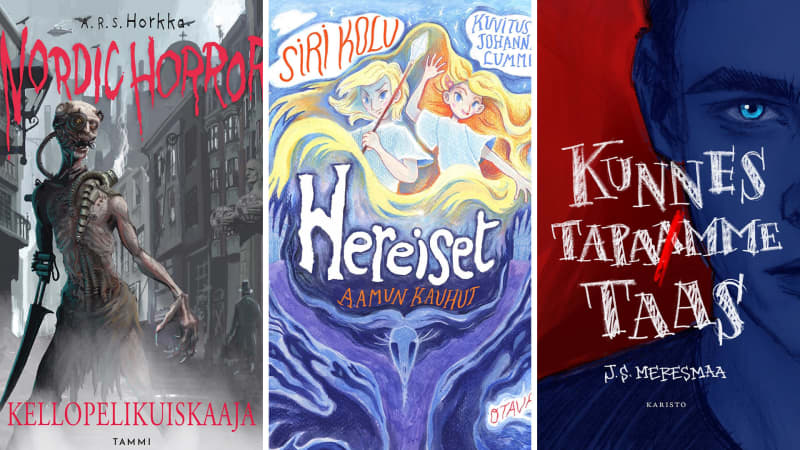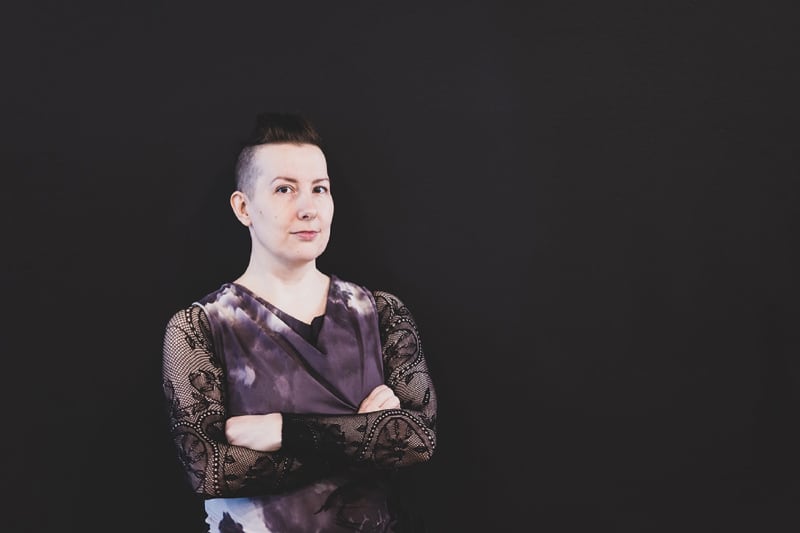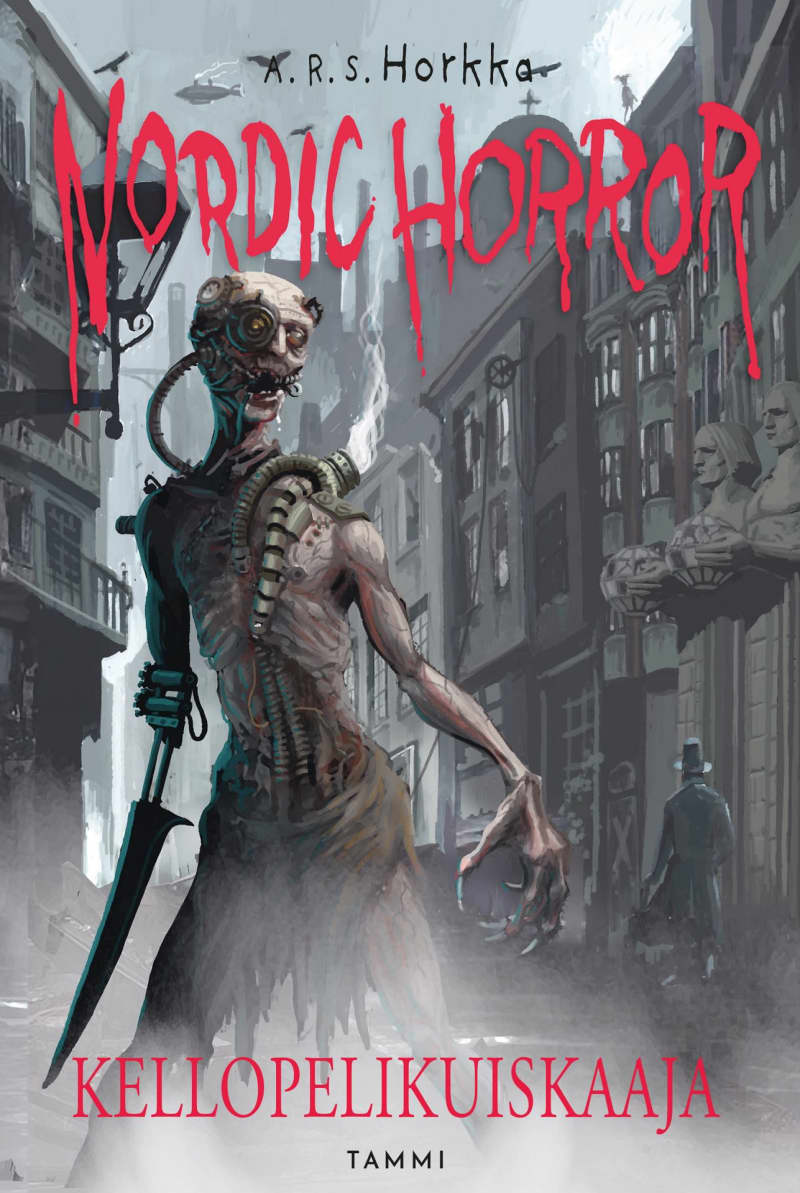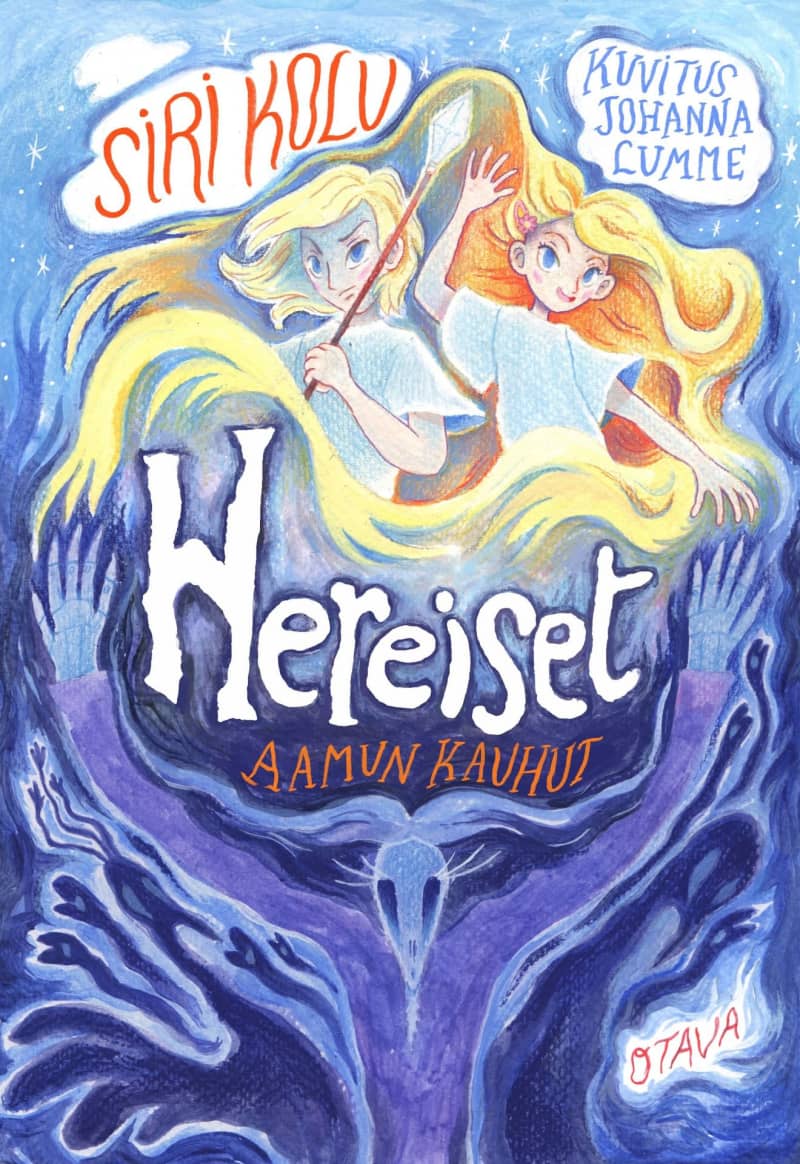
The horror boom also reflects the global situation and uncertain times. In addition, young people are interested in horror.
Horror is now abundant in young people’s literature, and some of it reflects uncertain and surprising times: first came the koruna, then Russia’s war of aggression in Ukraine.
– As an adult, I became bored with vampire stories because the girl is usually human and the romantic interest, the vampire, is usually a boy. The power dynamics of such a relationship mirror intimate partner violence: the stronger party is always thinking about killing the other,” says Meresmaa.
The familiar roles have now been turned upside down: the central protagonist and potential black angel in J.S. Meresmaa’s books is the Goth girl Nora, whose bloodlust turns Amish teenage boys into vampires. It also turns out that Nora is a video-game addict, which is a favourite of teenage boys.
– This seemed like a very natural and fresh option. I started to draw admiration and respect and I also thought about what kind of elements for a vampire story could be picked up from our modern society.
It’s also new that Amis people are adventuring in the main roles.
– In young people’s literature, the adventurers are mostly high school students, although a large number of young people go to a vocational school, Meresmaa himself, from Amis, points out.

The vampire becomes asexual
A funny side plot in the book series is brought by the hematophobia of one person who has turned into a vampire.
– Someone close to me has hematophobia, and he couldn’t read the script because it made him so sick. I was thinking about what makes vampirism that much more interesting, of course it’s a horror of blood.

J.S Meresmaata is also interested in vampires in the character’s radical change, aided by popular culture.
– In the beginning, vampires have been disgusting rotting corpses – creepy creatures of the night that were really feared and there was nothing fascinating about them. It was believed that if the post-mortem processes are handled incorrectly, the deceased will rise from the grave. The modern vampire, on the other hand, differs very little from a human, and its character is characterized by eroticism.
J.S. For Meresmaa, vampirism is associated with homosexuality and bisexuality, as well as asexuality, which means that a person does not feel sexual attraction towards other people.
– Asexuality sounded awfully natural for a vampire. Bloodlust is the most determining factor, and if you live to be over 130 like Nora, I’m betting that the allure of eroticism has already faded along the way. There has been a lot of investigation of sexual identity in young adult literature, which is a good and desirable thing. However, in the *Until we meet again* book, I wanted to bring out the side that what if you don’t always want to define yourself: when you’re young, you can’t necessarily say what you’re really like.

Monsters and other disgusting things
Instead, in *Aamu kauhui*, the reader encounters a real morkömarathon, some of the creepy creatures of which have also found their way into Hurmee’s taste. Jynttynen is a giant insect the size of a pin, which can suck an opening the size of the bottom of a water glass into human skin. From that, it milks a human pair empty of blood – in a few tens of seconds.
According to Siri Kolu, children and (almost young) people on either side of ten years are especially frightened and fascinated by a certain kind of unnaturalness.
– If a four-meter-long creature has a small and brown head, it’s really disgusting, as are over- and under-sized things and guys whose faces are somehow cloudy. Various earthworms, farts and garbage-smelling monsters also seem to be popular.

Siri Kolu is especially known for her *Me Rosvolat* book series, and she started writing horror based on the feedback she received during author visits to schools.
– The third- and fourth-grade boys guessed that when *Me Rosvoloi* flirts a little with excitement, would you be all in, i.e. would you be able to write horror. I thought it was wonderful that my aunt got the challenge.
However, writing horror didn’t immediately catch fire. Then in the corona year 2020, Kolu’s son saw a nightmare and told his mother about it, the pieces started to fall into place.
– The dream exuded a young person’s great uncertainty about how large structures live and the adults couldn’t tell why. I hit the table with 300 euros and said that I will write a trilogy if you give me the rights to use your dream. My son looked at me really surprised that now the last ball has fallen from that fortuna.

Horror in the subconscious
The structure of the *Heireset* series is characterized by a strong sense of playfulness, which is interesting: games and literature are often placed side by side.
– We writers are often pushed into a polarized position, i.e. whether you hate the game industry, it takes up all the readers’ time. I personally think that the game industry has produced really interesting structures and narratives, as well as a strong sense of community among children and young people. In *Terrors of the Morning*, for example, the main character ponders what a team is and what it means to be loyal to a team.
But what causes the current horror boom? J.S. According to Meresmaa, it’s about our time: many writers release their anxiety by writing horror. One reason can also be found in the genre itself.
– Young people’s writers get a lot of wishes and instructions about what and where they should write so that young people will read. Now, there have been many wishes that more horror would be introduced into schools and libraries. For many writers, it can also be a subconscious process: we share a concern that young people will stop reading, so let’s write horror and suspense.
See Me Rasvolat, based on Siri Kolu’s books:
